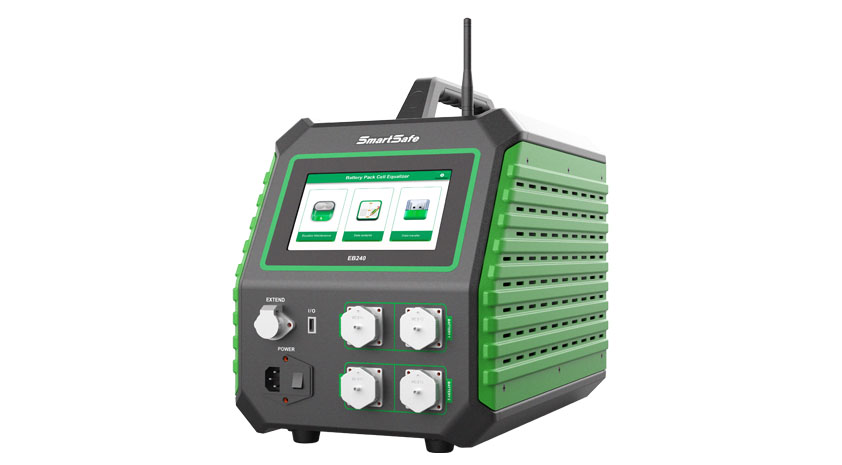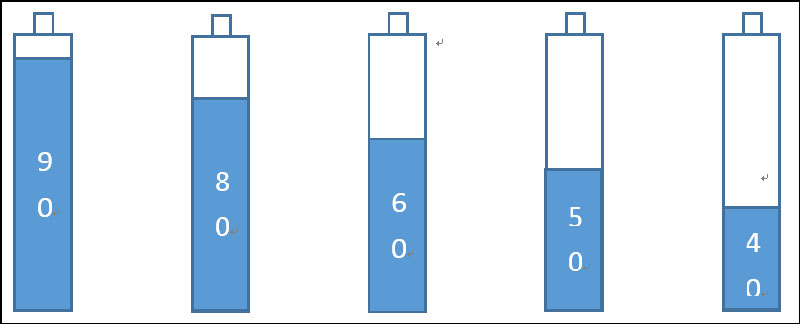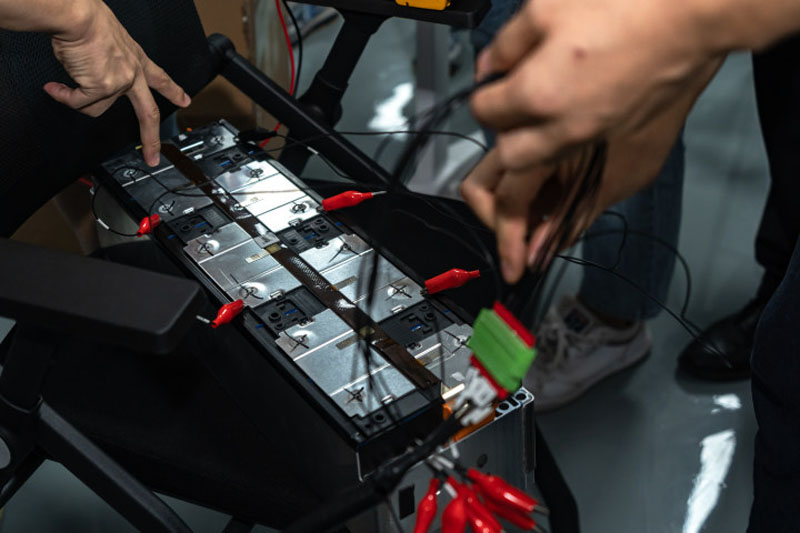EB240 is an electric vehicle battery pack cell balancer launched by SmartSafe. It is used to quickly solve the problem of inconsistent voltage of lithium battery packs. It is an intelligent and efficient battery pack balancing device. EB240 can be used for battery testing in various departments such as battery manufacturer after-sales/warehousing, TVC testing, QA quality control, etc., as well as battery maintenance at OEMs, and after-sales maintenance at 4S stores. It is suitable for lithium iron phosphate, ternary lithium, lithium titanate, and manganese. Lithium acid multi-type new energy battery packs.

Charge and discharge balance
Independent channel design to detect and evenly charge or discharge module cells. When charging or discharging, ensure that each cell in the module is not over-charged or over-discharged.
Balanced maintenance presets
The parameters of balance maintenance can be customized and the balance maintenance can be quickly carried out according to the preset parameters.
Voltage clamp
It has a mechanism to judge and reduce the working current when the target is reached, and during the test process, the voltage of the cells in the battery pack is infinitely close to the target threshold.
Multiple protection
Detect voltage and core temperature information, and provide a variety of test shutdown thresholds to avoid overcharge and overdischarge of the battery core.
7 inch display
The large LCD screen quickly displays all real-time data and icons. It supports touch operation and has a humanized input method.
|
Power Input |
AC90~264V/40~60Hz |
|
Wireless Communication |
WiFi and BT(external WiFi antenna) |
|
Power |
600W Max |
|
Equalize Number of Channels |
2X12Pin |
|
Charge and Discharge Voltage Range |
1.8~4.2V |
|
Equalize Interface |
16Pin |
|
Voltage Detection Accuracy |
士0.1% FS2±mV (maximum range 5V) |
|
Battery Interface |
24Pin |
|
Charge and Discharge Current Range |
0.1~5A Max |
|
Display |
7-inch TFT LCD screen,resolution 1024X600 |
|
Current Detection Accuracy |
土1% FS+0.05A (maximum range 5A) |
|
Communication Interface |
SMA, USB-Device |
|
Battery Temperature Detection Accuracy |
士2°C(-25C~ 85°C) |
|
Charge Control |
Constant current charging+constant voltage charging |
|
Discharge Mode |
Constant current discharging + constant voltage discharging |
|
Protection Function |
Input over-current protection, over-voltage protection, output over-current protection, over-temperature protection |
Cell balancing: When the battery pack has inconsistent cell voltages, EB240 can be used to balance the cells to achieve consistent cell voltages within the battery pack.
Trim after replacing battery core: After the maintenance personnel replace the battery cells in the module, they can use EB240 to equalize the battery cells in the module to achieve consistent battery voltage.

When the battery life of an electric vehicle is reduced, there is empty power, the charging is not saturated, etc., battery balancing can be used to reduce the difference between each battery cell to achieve the effect of increasing battery life.
Principle of charging and discharging power batteries: As the service life of electric vehicles increases, the gap between individual battery cells will gradually expand. Industrial manufacturing cannot guarantee that each battery is 100% the same, just like there are no two identical leaves on the same tree. Even if the two single cells are exactly the same, but their positions in the battery module are different, the ambient temperature of cell 1 may be higher than that of cell 2, and the single cell will also have some problems after multiple charges and discharges. The difference will gradually increase with service life.
After the power battery is used for a period of time, the SOC of the single cell is shown in the figure above. Max_SOC=90%, Min_SOC=40%. The SOC value of the power battery is determined by the smallest SOC in the battery pack, so the SOC value of the battery pack is 40%.
When the single cell with low SOC is fully charged, the power battery can not be discharged at this time. If it is discharged again, it will cause damage to the cell with the smallest SOC. In this case, the battery pack actually still has a lot of remaining power. This is what we call the barrel principle.
The same goes for charging. When the battery cell with high SOC is fully charged, the battery cell with low SOC is not yet fully charged. At this time, the battery pack can no longer be charged. If it is recharged, it will cause great damage to the fully charged cells (commonly known as overcharging, with the risk of explosion and fire).
The purpose of using the EB240 battery pack cell balancer to balance power batteries is to solve the above wooden barrel effect. It can balance the entire power battery in an integrated manner. The balancing speed is faster than single-cell balancing and module balancing, and it also makes the balancing effect more accurate.
1. Connect the cable to the battery pack
First, insert the quick connection strip connector of the lithium battery balancing wire into the corresponding terminal of the tester, and then connect the other end of the discharge wire to the battery box end. (Connect the red connector of the balancing wire to the positive terminal of the battery module that needs to be balanced in sequence, and connect the black connector to the negative terminal of the battery module that needs to be balanced)

2. AC power input
Connect the AC input power cord equipped with the instrument to the corresponding interface, and pay attention to the load output of the power socket (single-phase three-wire 220V input, maximum input 10A).
3. Balance settings
Select [Balanced Maintenance] from the main menu and click the [Settings] button to enter the battery pack setting interface for balanced maintenance. (If the battery pack wiring is faulty or not connected, "Not Connected" or "Connection Failure" will be displayed).
4. Start testing
In the [Balanced Maintenance] interface, click the [Start] button to start the test.
After the test is successfully started, you can view the cell voltage, working current, working status, test duration, capacity and other parameters of the corresponding test group.
5. Conditions for equilibrium completion
When the maintenance of the cell voltage reaches the target value, the status of the single cell is displayed as [Complete], and when all working cell channels are [Completed], the entire working unit channel is balanced and the work is completed.
Return